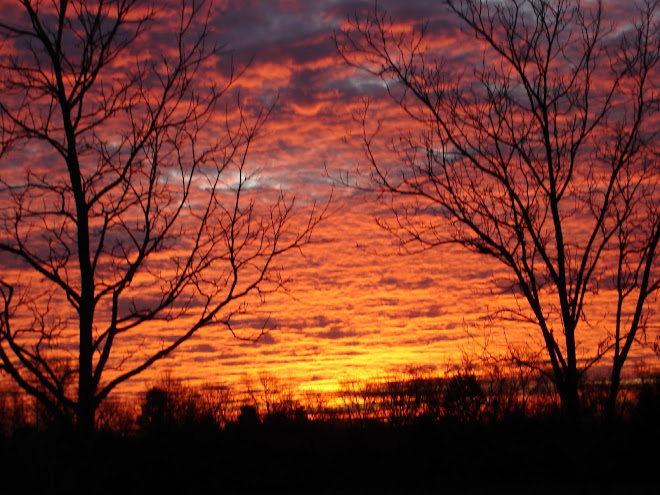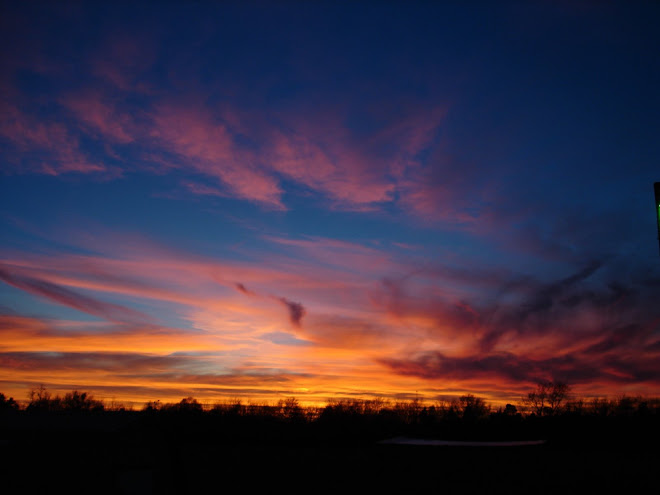Whether you have a coffee can full of compost or a thousand acres of farmland to garden, you can grow at least some of your own food for much less than you'd pay for it. In some instances, you can for free.
Get a few plants, a little water and some gardening wisdom (the kind found at the local library or through a search engine on the Internet), and you can frugally grow everything from potatoes and carrots to artichokes and asparagus.
Be careful. It can be kind of scary to walk into a garden center and look at the price of bedding plants! Believe me, that's not a frugal plan. For the price of a few of those plants, it seems to be cheaper (and certainly easier) to just buy a few tomatoes and lettuce at the store. Why do they cost so much?
The grower has invested in all sorts of lighting and containers and heating and watering systems to make the conditions just right to germinate and grow the largest amount of seed possible with the smallest amount of fuss and failure. While it would be impossible to duplicate that sophisticated setup at home without an enormous cost, it is possible to grow our own bedding plants and decide ourselves how much we want to pay for them.
Method One - This method is simple and straightforward, and while it can save money over buying the plants and/or the produce, it doesn't save as much as other methods do. You simply go to the store and buy seed, buy rows or racks of seedling pots, buy soil and/or peat moss and put them all together in a warm spot and water and wait and hope for the best.
Method Two - The second method is similar, except that you use the seed saved from last year. The pots can be saved from last year, or you can use empty food cans or plastic bowls for containers or just about anything else you can scrounge. Be sure to punch drainage holes in the containers and don't use clear glass jars; the light can cause fungi and other nasties to grow in the soil.
Method Three - The third (you knew this was coming, didn't you?) is the super frugal way. Save your own seed or trade with other seed savers for what you want. Make seedling pots from biodegradable newspaper so you won't have to disturb the tiny roots of the seedlings. Use your own compost or trade with someone for some of their compost to start the seedlings. Test the soil by putting a drop of vinegar in a teaspoon or so. If it fizzes, it's too alkaline. Then test it by putting in baking soda mixed with a little water. If it fizzes, it's too acidic.
I have yet another way. If you're not really into starting plants from seeds, but you want to garden within your budget nonetheless, there are ways to get free or almost free plants.
When you buy fresh vegetables over the winter, look for plants that have some of the roots left. Often, these can be put in a dish of water and they'll begin to grow. Keep your eyes open, too, for food that's trying to sprout. Potatoes are the most common of these. (No, you don't need special "seed potatoes.") Save potatoes with "eyes" for spring planting outside. Turnip roots can be replanted indoors and so can celery roots, onion bottoms and carrot tops. Don't cut too much of the vegetable away (carrots excluded). Leave a half inch or so with the root. You can eat the rest.
Carrots that have gone limp in your refrigerator will often grow beautiful tops in a container on a windowsill. You can eat carrot greens fresh or cooked, and you can stick a radish that's looking pretty bad in a container of dirt with plenty of water and it will grow and give you delicious radish seed pods.
At this moment I have, growing on my kitchen windowsill, two firm little white onions almost the size of golf balls. They grew from a soft little onion the size of a penny that was trying to sprout late last fall. It was the kind that usually gets thrown in the garbage.
Why throw away good food? Just because it doesn't look so appetizing now doesn't mean it won't be good eating with the proper conditions. Give it a try. It's fun and it's extremely frugal!
Other possibilities are cabbage and garlic, and don't overlook the seeds we eat. Got a few beans, peas, lentils, popcorn seeds? Why not plant them? The return is amazing.
If you're growing a garden, you must make sure the plants are well fed. There are plenty of commercial fertilizers on the market, but they can be expensive, and you may want to be more selective about what you add to your soil. There are alternatives if you're looking for a cheap fertilizer for your garden.
1) Make your own compost from kitchen scraps, lawn clippings, leaves and shredded tree limbs. There are many designs for composters, which range from quite simple to highly expensive.
2) Bury your organic waste in your garden if you don't want to build a compost pile or if your community doesn't allow one.
3) Check with your city or county to see if they offer free compost. They often have an area where they dump their tree trimming mulch and are more than happy for you to come and get it free. Even if there is a small fee for loading, it's well worth it.
4) Go for the cheaper bags of compost in your garden supply store. Usually, the only difference in these and the more expensive brands is the texture. The cheap brands may be a little lumpier, but you can work them into the soil, and they'll serve the same purpose of adding nutrients and amending the soil.
5) Find a source for free manure. Fresh manure can burn your plants, so it should compost for about a year before you add it to your garden. Many times, your supplier has an old pile and a fresh pile, so go for the older one. Your neighbors and your garden will thank you for that. Manure can also have weed seeds in it, so you may have some extra weeding to do.
6) Concoct your own liquid fertilizer. You can find many recipes for making fertilizer, which use items such as beer, ammonia and other household products. If you decide to use some of the recipes, do your research and find some legitimate and proven formulas, or you may do more harm than good to your young plants.
7) Read the label if you decide to use some of the cheap chemical fertilizers. Look for a complete and balanced fertilizer that includes minor elements and micro nutrients. The ones with only a couple of elements may be cheaper, but aren't going to provide everything your garden needs.
Cheap Gardening
One way to lower grocery costs and improve the quality of your meals is to garden. Even people who live in apartment settings can garden either with containers on windows and porches, or by joining a garden co-op which charges a small fee for space. Another often over looked source of food is to plant perennial plants, shrubs and trees which bear fruit. To get started you need seeds. Check out your local discount stores for inexpensive seed. I’ve gotten some in early spring sales for ten cents a pack. For those crops in which you only want a few plants (broccoli or cauliflower for example) these little packs are just fine. You can plant in almost any discarded container. I use egg cartons, egg shell halves, and milk containers cut to size, but anything water proof will do. Soil can be plain garden dirt sterilized by baking in the oven, or a cheap bag of potting mix from the discount store. It depends on the time you have to fiddle about.To sterilize soil, break up the clods and remove worms and put them back into the garden. Then place the dirt in a heat proof container and bake at 200 degrees Fahrenheit for around an hour. This will kill the damping off fungus and nematodes which might be present to eat your plants! In nature bright sunlight does this, but most seed starting takes places indoors where the light is not strong enough to kill damping off in the soil. Fill your seed starters with the soil mixture and plant as directed on the seed packs. Keep moist and warm and soon you’ll see the little plants. This late in the season once they have two sets of true leaves start leaving them out in dappled sunlight for a few days before moving them to the garden. This called hardening-off and prepares the plants for the sunny, windy world of the garden. If you don’t have room for a separate vegetable garden tuck veggies in with your flowers. The best peppers I ever grew were in my flower bed last year!!!The cheapest way to get perennials and larger permanent plantings is as discards and gifts from other gardeners. You can swap many plants and get some free by this sharing. Try joining your local garden club to find other gardeners. If you don’t have the time or resources to network with other gardeners, you can by plants cheap at season end sales or early season specials. Check out the permaculture sites online for ideas for plants and trees which bear fruit, so they are more than just decorative. GardeningFertilizer for your garden can be gotten by composting yard waste and kitchen scraps. City and apartment gardeners can compost too, by using worm composting. In this method worms can unobtrusively compost your kitchen garbage into food for your plants –without freaking the neighbors with a compost pile. Expensive sprays can be replaced by a whole series of recipes for sprays which use kitchen ingredients.
Here are some cheap sprays for various garden problems culled from all sorts of newsgroups and garden hint lists:
WEED KILLERS: Mix 1 gallon white vinegar, 1 cup table salt, and 1 tablespoon dishwashing liquid together and spray on weeds. To do so, remove approximately 2 cups of vinegar from the jug, pour in the salt and dishwashing liquid, then return the 2 cups of vinegar to the jug. Close the lid and shake to mix. Transfer to a spray bottle (after shaking to mix the ingredients) as needed. It works as well, if not better, than Chemicals, but is much cheaper. Be careful, it will kill whatever you spray it on! If you go purchase vinegar, 10% acidity, 20% acid would be better, and spray it on the weeds in the heat of the full sun, you will have an effective weed killer.
FOLIAGE FERTILIZER SPRAY:To make a home brew, use the following per gallon of water 1-2 cups manure compost tea 1 tablespoon liquid seaweed 1 tablespoon blackstrap molasses 1 tablespoon natural apple cider vinegar. For more serious disease infestations: 1 tablespoon of Epsom salts 1/4 cup garlic tea 1 rounded tablespoon baking soda or potassium bicarbonate.
GARDENVILLE FIRE ANT CONTROL, add two oz. of concentrated orange or 1 cup of homemade citrus oil.
HOMEMADE CITRUS OIL: Fill a container half full of citrus peelings or old fruit, the rest with water, let soak for a week or two, use about a cup of your new concentrate per gallon of spray.
MISCELLANEOUS REMEDIES SKUNK and OTHER FOUL SMELLS: 1 Quart Hydrogen Peroxide, 1/2 cup Baking Soda, 1 teaspoon Liquid Soap.Rub into fur and rinse with tap water. DO NOT STORE THIS MIX!
REPELL PEST ANIMALS: Mix in one 20-gallon hose end sprayer (can buy a sprayer at any plant nursery):8 oz. Murphy's oil soap 4 oz. Castor oil 1 oz. human urine 1 teaspoon alum dissolved in hot water 3 oz. Tabasco hot sauceSpray the desired area until the sprayer is empty. Will not harm plants, grasses, shrubs or trees.
INSECTICIDES, INSECTICIDAL SOAPS AND MOSQUITO REPELLANTS: Olive oil insecticide soap, 4 tbsp lye, 3 tbsp cold water (should be soft water or rain water) 1 cup olive oil. DO THIS IN A WELL VENTILATED AREA (i.e. outside!) USE A GLASS, ENAMEL, WOOD, or STAINLESS STEEL BOWL.
1. put cold water in bowl.
2. add lye and stir until dissolved (this is the part where you need to be careful -- the lye can bubble around, so don't get burned and keep your face back).
3. once the lye is dissolved, slowly add the oil while stirring.
4. stir for 5 minutes.
5. pour into a plastic tub, and let it set.
The setting process can take a day or two, so be patient. To use it, I grate the block of soap into powder with a cheese grater (the fine side), and add 1 tsp of powder to 1 cup of soft water. If using a sprayer it's wise to sieve the soap mixture before putting it in the bottle to get out any soap chunks
MOSQUITO REPELLENT: Start out by roasting garlic in the microwave, squeezing the pulp out and spinning it in the blender with a little oil.Then add water and some blue food coloring, and put the concoction in the fertilizer dispenser that hooks to the hose.(the color was so you know when it was done dispensing)Mixing garlic powder with water works just as well and is less trouble.Just spray it all over the grass, vegetation and everything.It will be effective immediately and the smell does go away quickly.It lasts for me about 2 weeks or until we have a hard rain.The stuff is pure magic. It also keeps the gnats and "no see 'ems" away, and even deters the yellowflies.
NEMATODES: Use sugar water (1 lb. to 5 gallons) to drench soil 1 lb. sugar to 50 feet of row, 1 tsp. sugar in planting hole (unclear, but this may be the rate when planting large-seeded plants like melons or squash) 3/4 cup sugar in hole when transplanting tomatoes.
To Give your plants a mineral boost use Epsom salts:Like your body, your plants will suffer from a lack of nutrients. Just a spoonful of Epsom Salt is like a multivitamin, and can prevent weak stalks and yellow leaves. And for big, healthy vegetables, sprinkle Epsom Salt around the base of each plant.
























%5B1%5D.jpg)







